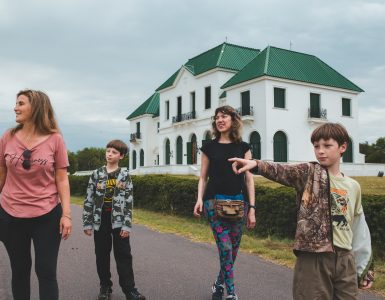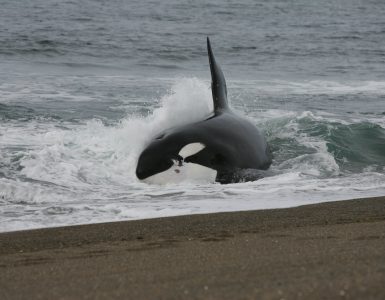Located in Córdoba, it will be one of the largest national parks in our country. It offers excellent alternatives for travelers and countless natural landscapes within its more than 4,000 hectares, from bird watching to horseback riding. In this article, we tell you all about how to enjoy its amazing views.
In pandemic times, outdoor experiences have become the most frequently sought activities. And it’s only natural: in a context where social distancing is a must, all those activities that meet that requirement will be the first ones that we aim at. Even more so if they also delight us with stunning landscapes. And, in this respect, Argentina not only meets but rather exceeds our expectations: impressive panoramic views, one of the seven natural wonders in the world, the second highest mountain on Earth and a display of natural diversity are the perfect proof that touring around our country is the right decision.
Amidst so many top-quality proposals, however, understanding what locations to visit in the Argentine territory might become a little complicated. So, what should the next stop be? For those who seek a different and yet fascinating experience, the recently-announced and soon-to-be-created Ansenuza National Park is the ideal choice. It is located in the province of Córdoba and will comprise part of the Mar Chiquita Lagoon and the Bañados del río Dulce. It will be the third national park in the province, home to the three types of flamingos living in South America and to the fifth largest salt lake worldwide. And although it has not been formally created yet, there are plenty of reasons to visit the park and to enjoy outdoor activities there. Below are 5 unforgettable experiences to live when visiting the area of the future National Park:
Bird watching
The favorite ones are the pink-colored birds with the slender long legs. We are talking about flamingos, of course. Their unmistakable elegance surprises many visitors and the Mar Chiquita (or Ansenuza) lagoon shelters three of the six existing species worldwide: the Chilean flamingo, the Andean flamingo and the Puna flamingo. The first ones have made the park their habitat and today there are over three hundred thousand of them living in this area.
But this is not all; besides these beautiful pink-colored birds, over 350 other bird species can be found throughout the lagoon, hills and wetlands surrounding the Park. In fact, the Ansenuza area harbors 36% of Argentine birds and 66% of migratory and beach birds that come to our country. Both reasons are good enough to rate this National Park as one of the best locations in Argentina for watching (local and migratory) birds in all their sizes and colors.
What other species can be seen? Among the water birds living on the lagoon shore are coscoroba swans, black-necked stilts, brown-hooded gulls, neotropical cormorants, great white herons and many others.
Hiking
Getting to know the land that will be part of the park and being surprised by its biodiversity is clearly a must for any visitor. As far as landscapes are concerned, islets, wetlands, salt areas, high and low coasts, and the well-known Chaco forest can be found here.
Naturally, such a wide environmental diversity means that the local wildlife is pretty varied as well. The charm of this magnificent location is not just bird watching! Mammals, amphibians and reptiles of all kinds live here, as well as endangered species such as the Chaco tortoise, the neotropical otter and the maned wolf.
This is why it is critical to turn this space, which today is a multiple-use Provincial Natural Reserve, into a National Park. It means gathering efforts to preserve its wide biodiversity which, as incredible as it may sound, impacts on the global ecosystem.
Sailing on the Ansenuza sea
The province of Córdoba is not connected to the ocean but, as mentioned before, it has a sea of its own. Even if it is not really a sea in geographical terms, the Ansenuza Sea is the largest salt lake in South America and the fifth largest worldwide. In fact, it has three times as much salt concentration as an ocean. Its waters even have medicinal properties! And sailing on them is, no doubt, an amazing experience. Besides, it is one of the most strategic panoramic points for the famous golden hour which, by the way, it is best welcomed with a drink in hand to toast to such stunning view.
Horseback riding in La Paquita
It is no news that the Córdoba territory is the choice of many to enjoy our equestrian mates. Córdoba, with its amazing hills, is perfect to tour on horseback. Ansenuza is, of course, no exception, and it is especially recommended to take a ride around the wonderful city of La Paquita.
This ride of about one and a half hour around the countryside ends on the shore of Mar Chiquita Lagoon and displays the wild landscapes, the fauna of the hills and, of course, a wide bird diversity. Here’s a tip: tour it very early to delight yourself in the sunrise, or late, to enjoy the sunset. Whatever you decide to do, the sunshine on the horizon will be hard to forget. In fact, many visitors say that here they have experienced one of the best sunsets in the world.
Flying over the area
Touring the Córdoba territory is always captivating. But doing it from up high means living a more astounding experience. Although the plane goes beyond the limits of the National Park, it flies over the city of Miramar – the most developed tourism center in the area – as well as the mouth of the Primero (or Suquía) and Segundo (or Xanaes) rivers, both of which are part of the closed basin of the Ansenuza Sea.
From up high, tourists get the feeling that the lagoon has no end: not even from a plane can it be seen in all its 100-kilometer-width! And the best of all is that the flight includes the area where many of the park birds feed, so it is possible to see how many of them, who fly together, display a perfectly well coordinated and hypnotizing show in the sky. Finally, for history fans, the aerial ride overflies the ruins of the Gran Hotel Viena which, along with 100 hotels more, suffered the consequences of the lagoon flood in 1997 and is currently the symbol of a historical time.








Add comment